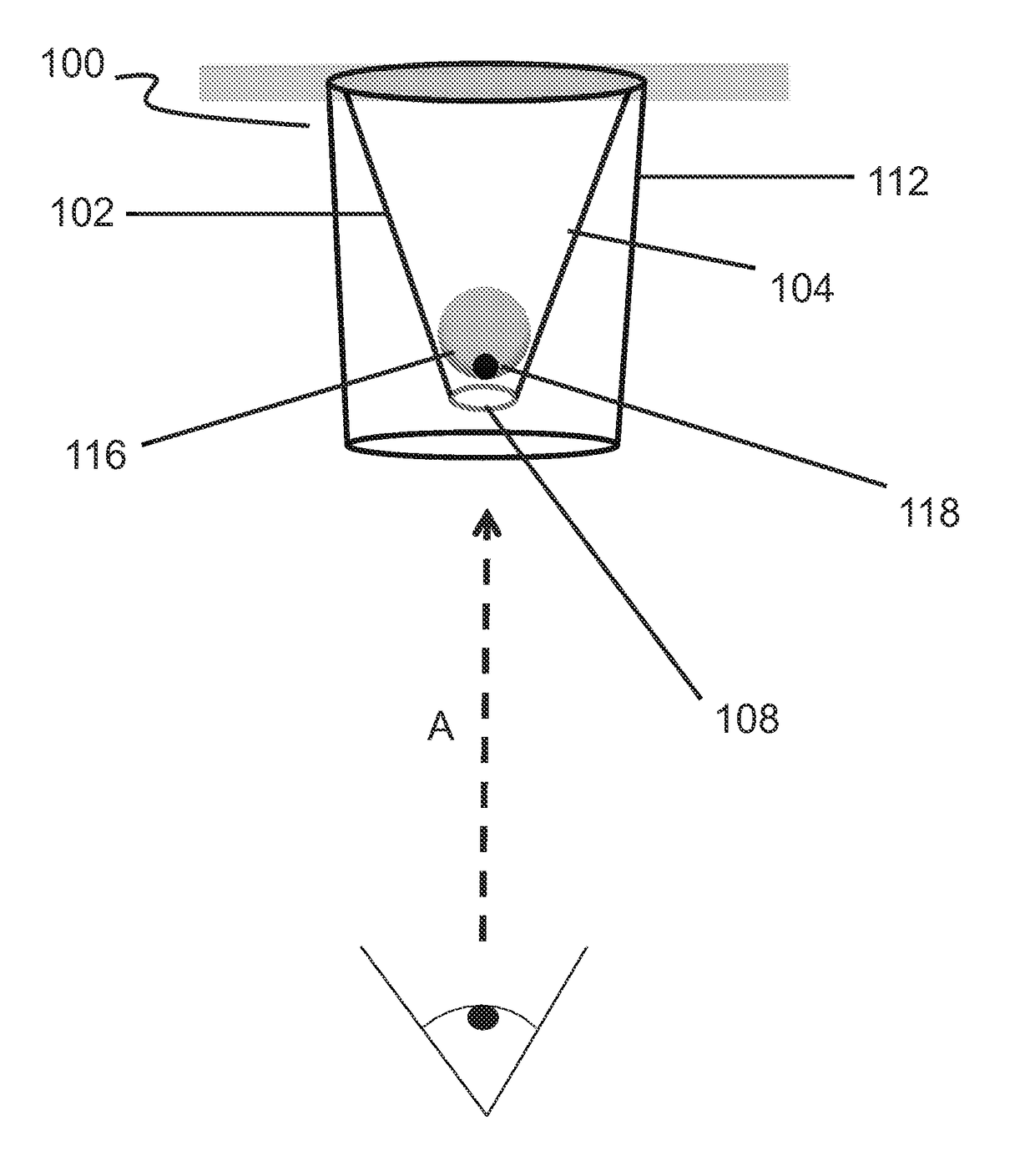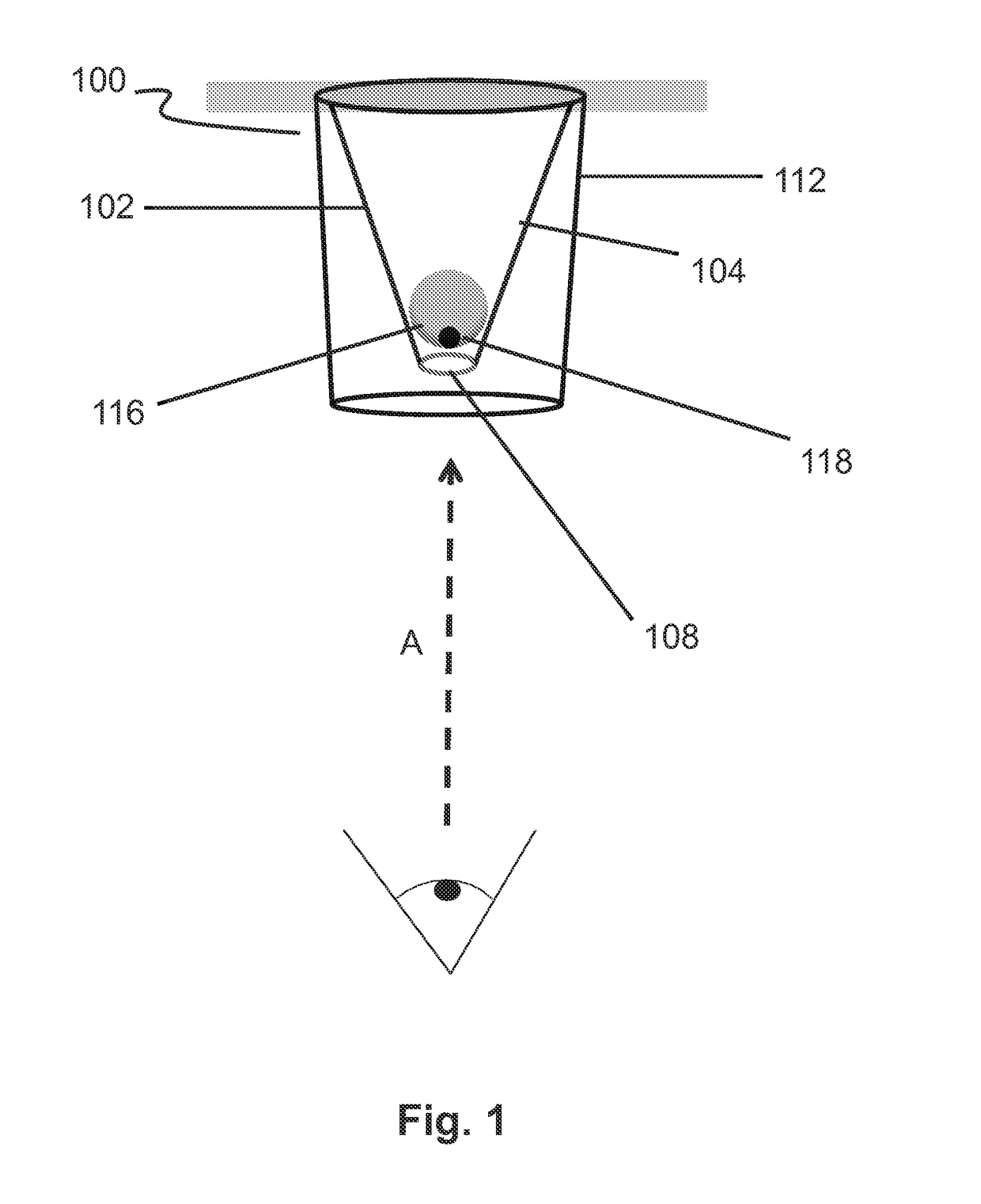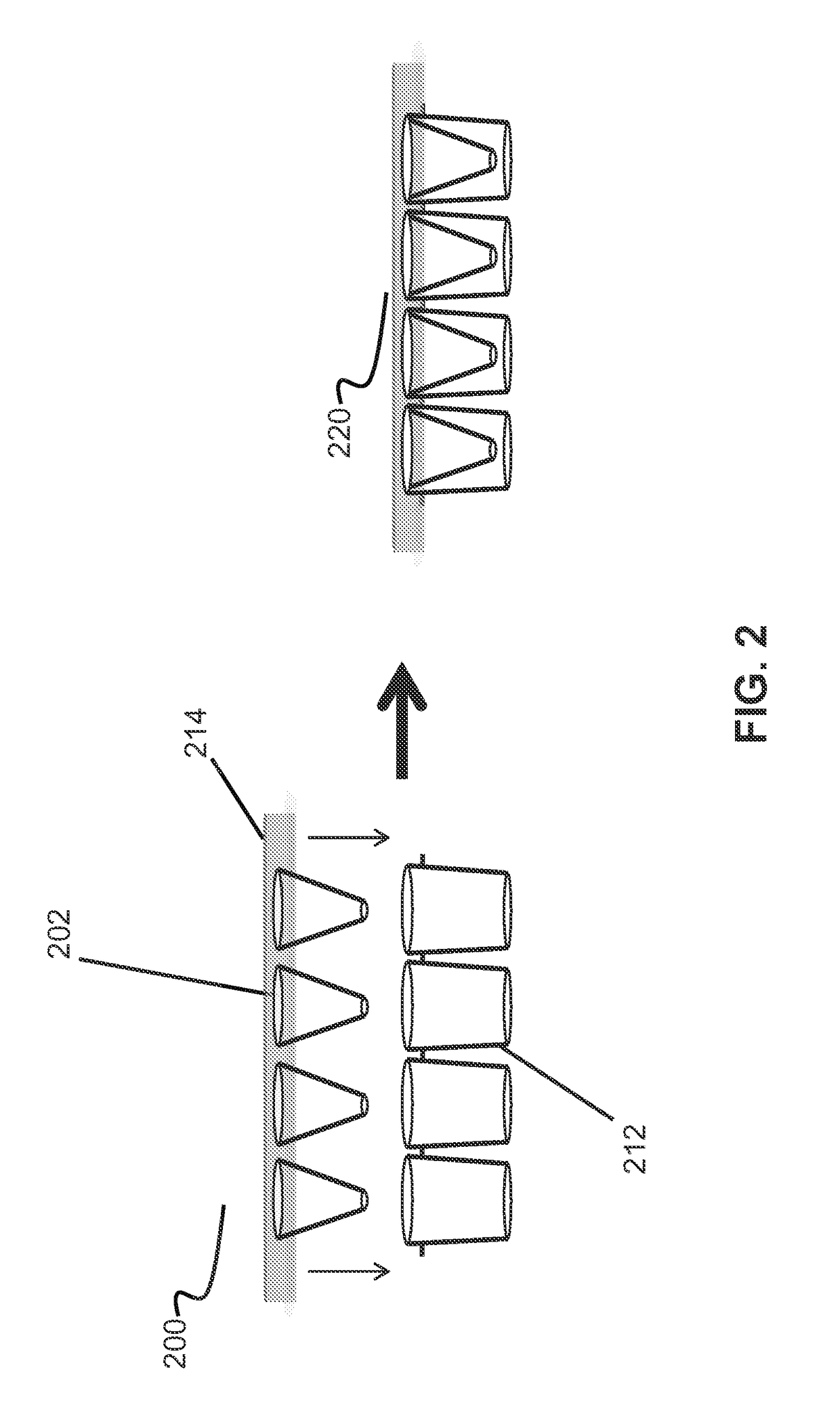Conical devices for three-dimensional aggregate(s) of eukaryotic cells
a technology of eukaryotic cells and conical devices, which is applied in the direction of apparatus sterilization, specific use bioreactors/fermenters, and after-treatment of biomass, etc. it can solve the problems of difficult control of the culture environment, difficult design challenges, and difficult to achieve the effect of facilitating the formation of 3d cell aggregates, and achieving easy operation and use. , the effect of not easily dislodged
- Summary
- Abstract
- Description
- Claims
- Application Information
AI Technical Summary
Benefits of technology
Problems solved by technology
Method used
Image
Examples
example 1
[0101]White HIPS coupons were coated with two different polymers, both with and without the presence of nanoparticles to evaluate water contact angles. Two coupons were coated with polyisobutylene (PIB): one coupon, “PIB-coated,” was coated with a 10 mg / mL PIB (90:10 mixture of Aldrich PIB Mw 50 K:BASF Oppanol B PIB, Mw 4 million, available from Aldrich, Milwaukee, Wis.; and BASF Corporation, Wilmington, Del., respectively) solution in n-hexane, and the other coupon, “PIB / Tex1-coated,” was coated with a dispersion in n-hexane of 10 mg / mL PIB (90:10 mixture of Aldrich PIB Mw 50K:BASF Oppanol B PIB, Mw 4 million, available from Aldrich, Milwaukee, Wis.; and BASF Corporation, Wilmington, Del., respectively) and 12 mg / mL CABOT CAB-O-SIL™ TS-530 fumed silica nanoparticles (Cabot Corporation, Boston, Mass.). Two other coupons were coated with hydrophobic fluorinated copolymer: one coupon, “F8H2A-coated,” was coated with a 10 mg / mL fluorinated copolymer (1H,1H,2H,2H-perfluorodecyl acrylate...
example 2
[0106]Conical devices having similar dimensions to the conical device illustrated in FIG. 4 were vacuum formed and used in order to determine whether the position of an aqueous drop inside a conical device would be located at a suitable focal distance when examined by an inverted microscope to ensure proper viewing of the drop and its contents for cell culture experiments and for taking digitized microscope images (LEICA™ DM IL LED microscope, used with a LEICA™ DFC 400 12V, 200 mA digitizer and LEICA™ Application Suite software; available from Leica Microsystems, Buffalo Grove, Ill.).
[0107]Three conical devices were singly cut out of the molded 0.5-mm-thick molded white HIPS sheet in order to individually fit into the wells of a commercially available 96-well cell culture plate. Each device was used as a separate experiment. Conical devices were cleaned and subsequently coated using the previously described protocols at the beginning of the “EXAMPLES” section.
[0108]FIG. 5 illustrat...
example 3
[0110]Three textured hydrophobic conical devices having similar dimensions to the conical device illustrated in FIG. 4 were evaluated for utility and non-cytotoxicity in monitoring the growth of 3D eukaryotic cell aggregate(s) in drops containing eukaryotic cells suspended in culture medium. Bovine aortic endothelial (BAEC) cells were used in this experiment.
[0111]Conical devices were cleaned and subsequently coated using the previously described protocols at the beginning of the “EXAMPLES” section. One conical device was left uncoated.
[0112]The other two conical devices were coated using two different types of nanoparticles in a dispersion in n-hexane with polyisobutylene (PIB): one device, “PIB / Tex1-coated,” was coated with a dispersion in n-hexane of 10 mg / mL PIB (90:10 mixture of Aldrich PIB Mw 50K:BASF Oppanol B PIB, Mw 4 million) and 12 mg / mL CABOT CAB-O-SIL™ TS-530 fumed silica nanoparticles, and the other device, “PIB / Tex2-coated,” was coated with a dispersion in n-hexane of...
PUM
| Property | Measurement | Unit |
|---|---|---|
| diameter | aaaaa | aaaaa |
| contact angle | aaaaa | aaaaa |
| contact angle | aaaaa | aaaaa |
Abstract
Description
Claims
Application Information
 Login to View More
Login to View More - R&D
- Intellectual Property
- Life Sciences
- Materials
- Tech Scout
- Unparalleled Data Quality
- Higher Quality Content
- 60% Fewer Hallucinations
Browse by: Latest US Patents, China's latest patents, Technical Efficacy Thesaurus, Application Domain, Technology Topic, Popular Technical Reports.
© 2025 PatSnap. All rights reserved.Legal|Privacy policy|Modern Slavery Act Transparency Statement|Sitemap|About US| Contact US: help@patsnap.com



